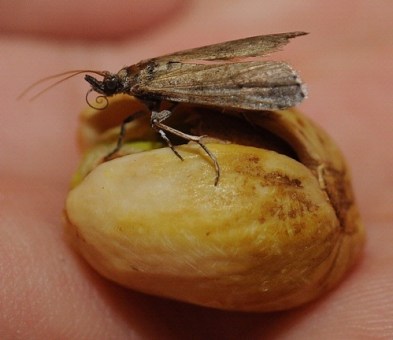
A project looking at using sterilizing methods to control navel orangeworm populations is seeing some uplifting improvements after a few tweaks.
Research is testing the sterilization of male NOW moths to help reduce the pest and its damage on tree nuts. Sample results last year, however, showed poor performance from those altered moths. “You’re right, that data last year showed that the males weren’t really responding to pheromones,” U.C. Cooperative Extension Assistant Specialist Houston Wilson said. “We weren’t recovering them in any sort of high numbers in any of the released blocks.”
Wilson is one of the leads on the project and said they even tried releasing unsterilized moths from the facility to see if the unaltered insect itself may be the issue. Those moths had similar poor performance as well.

UCANR Photo: Kathy Keatley Garvey
Wilson and the team started systematically changing the details in how the sterile moths are released into the orchards, and the has been a significant improvement in moth performance since one particular change. “What we found this year was giving them a very simple paper grocery bag mechanism to release them,” he said. “It gives them a little protection, a lot of verticle surface to rest on, and it’s a little bit darker since these are nocturnal insects. Once we did that, we started to see the recovery of irradiated males increase pretty substantially.”
Wilson told AgNet West last year that they had a hunch the transportation and release of the moths might be pretty jarring for a nocturnal insect. “These things are produced in a facility in Arizona, they’re shipped by plane to California, moved by ground to released sites and in some cases put back into an airplane and dropped out at 100 miles per hour,” he said. “There are a whole series of stressors that these insects are experiencing…So there are all of these factors that we are trying to isolate one at a time, and it becomes a lot more complicated than it sounds.”










